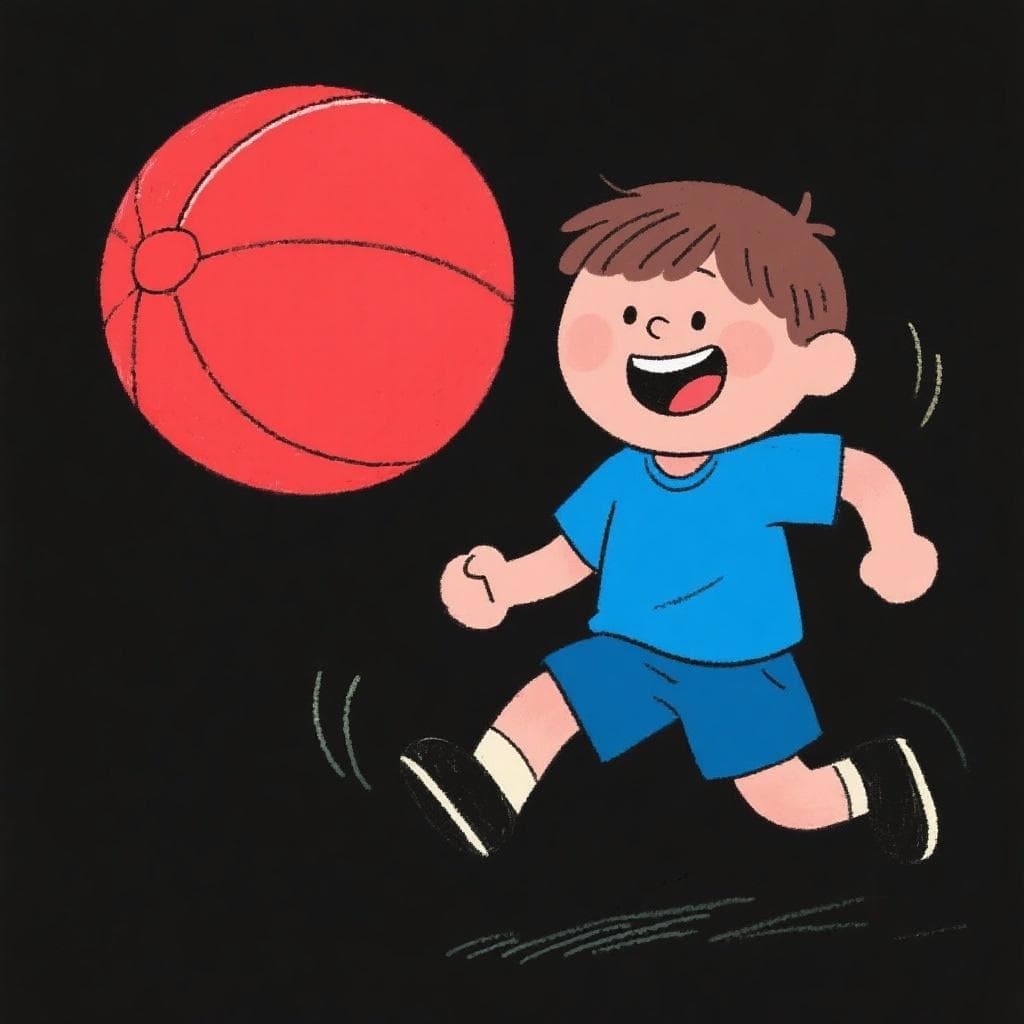Bota la pelota, Pepe.
BO-ta la pe-LO-ta, PE-pe
Bounce the ball, Pepe.
🔊 Listen & Practice
Start with slow speed to master pronunciation, then gradually increase to challenge yourself.
🎨 Visualization

Bota la pelota, Pepe! This one is all about the lips.
🎯 Pronunciation Focus
The Spanish 'b' Sound
/b/At the beginning of a phrase like in 'Bota', this sound is made just like the English 'b' in 'ball'. You press your lips together firmly and then release the sound. The key takeaway is that in Spanish, 'b' and 'v' make the exact same sound!
The 'p' Sound (without a puff of air)
/p/The Spanish 'p' is softer than in English. Press your lips together for 'Pepe' or 'pelota', but don't release a strong puff of air like you would for the English word 'party'. Hold your hand in front of your mouth—you shouldn't feel much air when you say it correctly.
📝 Practice Breakdown
Start here. Make a clear, strong 'b' for 'Bota'. Then, for 'pelota', switch to the soft 'p' with no air puff. Feel the difference between the two sounds.
Now for the repetition. Say 'Pepe' with two quick, soft 'p' sounds. The challenge is to say the whole phrase without accidentally mixing up the 'b' and 'p'.
Key Words in This Tongue Twister:
📚 Background
This is a classic first tongue twister for Spanish-speaking children. It's short, sweet, and perfectly designed to train the mouth to distinguish between the 'b' and 'p' sounds, which are made in almost the same way.
❌ Common Pitfalls
Making the 'p' too airy
Mistake: "Pronouncing 'pelota' and 'Pepe' with a strong puff of air, like the English word 'pop'. This is called 'aspiration'."
Correction: The Spanish 'p' is 'unaspirated'—no big puff of air. Try this: hold a tissue or your hand in front of your mouth. Say 'party' and you'll feel the air hit. Now say 'Pepe' and try to make the tissue move as little as possible. That's the Spanish 'p'!
Slowing down between words
Mistake: "Pausing too much, like 'Bota... la... pelota... Pepe.'"
Correction: Try to link the words together smoothly. Spanish has a more flowing rhythm than English. Think of it as one continuous phrase: 'Botalapelota, Pepe.' This will help you get the natural cadence down.
🌎 Where It's Used
General Spanish
This simple tongue twister is universally known and used across the entire Spanish-speaking world, especially with kids.
🔗 Related Tongue Twisters
The Pepe Ball Bounce
Let's see your speed! Try to say it five times in a row, getting a little faster each time. Record yourself and listen back to make sure your 'b's and 'p's stay clear.
🏷️ Tags
Frequently Asked Questions
Why is the difference between the English 'p' and Spanish 'p' so important?
It's one of those small details that makes a huge difference in your accent! Mastering the soft, unaspirated Spanish 'p' will instantly make you sound more like a native speaker. It's a subtle but powerful way to improve your pronunciation.
Is 'Pepe' a real name?
Yes! 'Pepe' is a very common and affectionate nickname for the name José in Spain and Latin America, similar to how 'Bill' is a nickname for William or 'Joe' is for Joseph.
